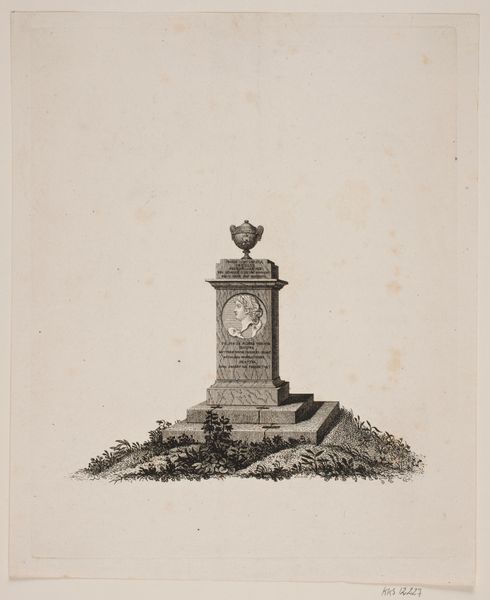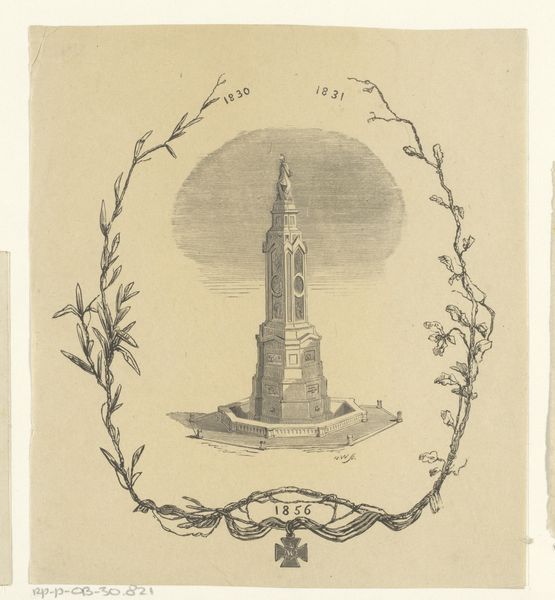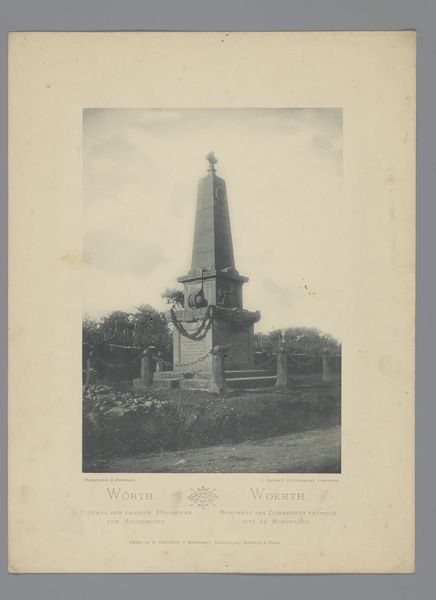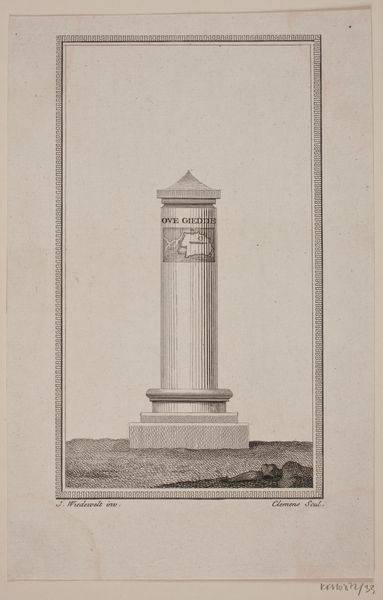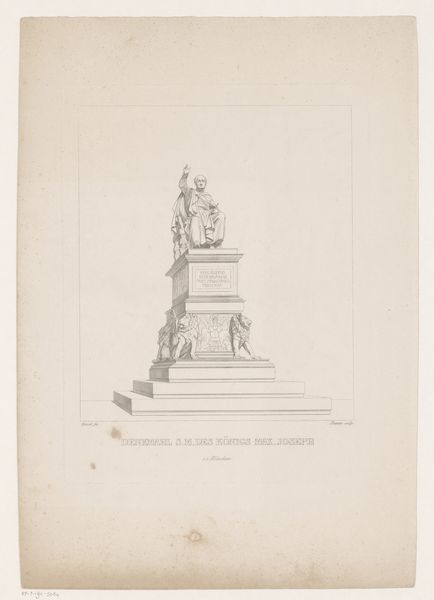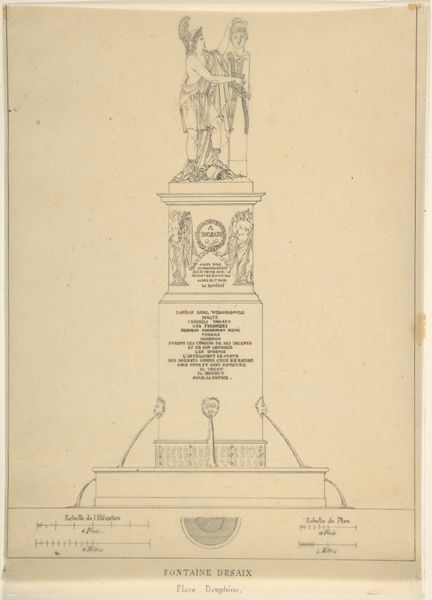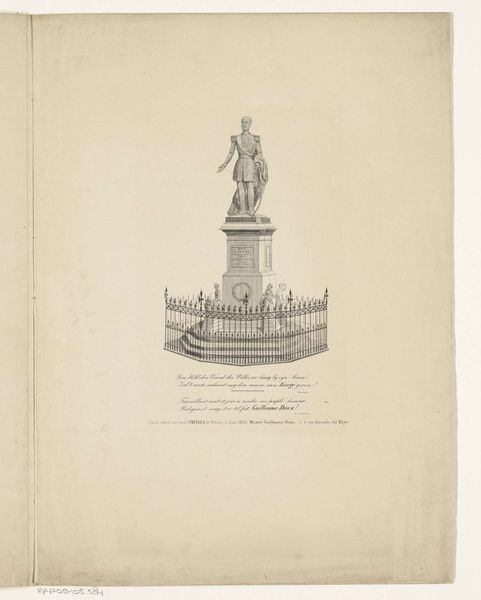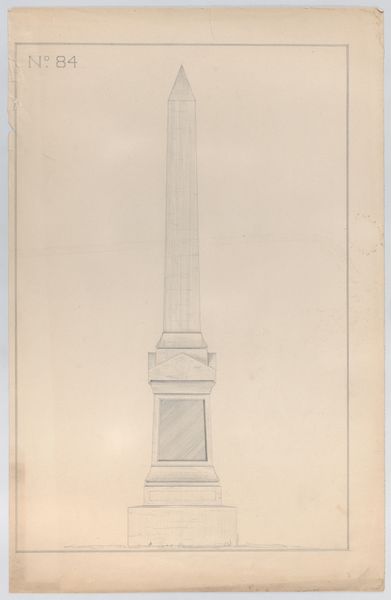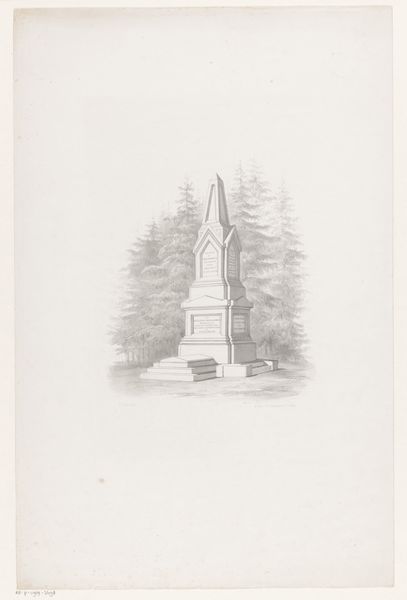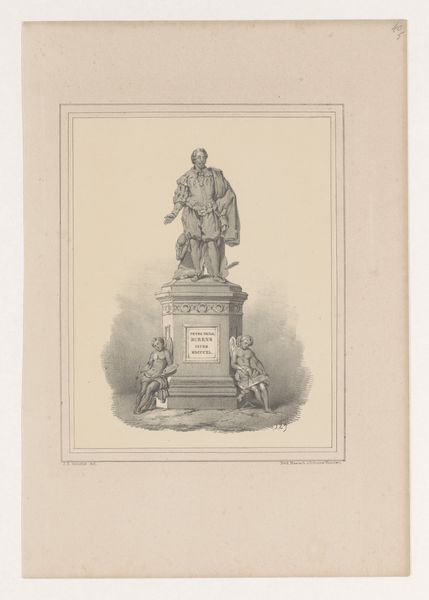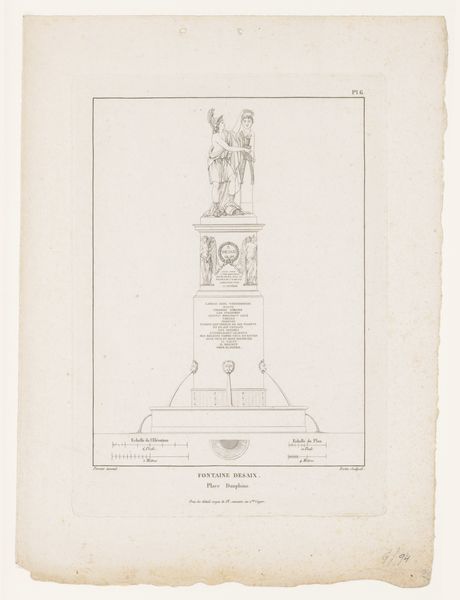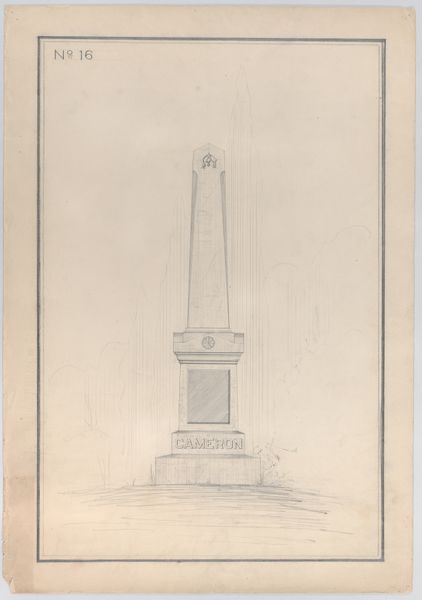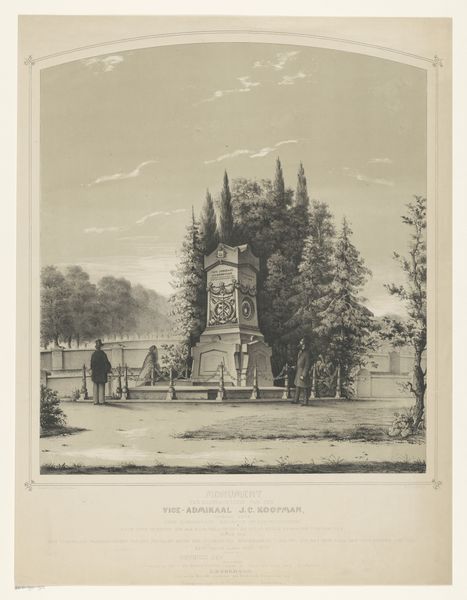
Grafmonument van Gerhard Heinrich van Senden in Zwolle before 1859
0:00
0:00
drawing, print, graphite, engraving
#
pencil drawn
#
drawing
#
neoclassicism
# print
#
pencil sketch
#
old engraving style
#
landscape
#
pencil drawing
#
graphite
#
cityscape
#
pencil work
#
academic-art
#
engraving
#
realism
Dimensions: height 420 mm, width 290 mm
Copyright: Rijks Museum: Open Domain
Curator: This print, rendered before 1859, depicts the "Grave Monument of Gerhard Heinrich van Senden in Zwolle." The artist is Antoine Franciscus Cornelis Hoffmann. What strikes you first about this piece? Editor: The monument looms with a sombre yet restrained elegance, wouldn't you agree? The balance achieved through the crisp lines and measured tonal gradations is immediately evident. Curator: Indeed. Hoffmann masterfully uses graphite to capture both the monument's physical presence and its relationship to the surrounding landscape. Note how the surrounding foliage acts as a framing device. The Neoclassical elements stand out prominently. Editor: Observe also how the symbolic language inherent within its structure seems so carefully plotted: that serene face surrounded by what appear to be laurels. Is it reaching towards the heavens with a noble spirit? Are we meant to take away something from this connection to the natural order? Curator: The details certainly guide us to an emotional space. Notice the strategic use of shading and line weight to emphasize certain aspects while subtly receding others. It's a fascinating exercise in perspective, pushing toward idealized representation while hinting at something verging towards the romantic. Editor: The symbolic weight of such a permanent structure also plays with the themes of permanence in a rapidly changing world. The monument represents collective memory as the resting place of an important citizen from that time, the importance being preserved for generations through visual art. Curator: A key observation, which returns us to the composition. Hoffman uses the monument to investigate structure and form while pointing our thinking toward questions about social cohesion and change. Editor: Thank you. It is a fine demonstration of how one picture can encapsulate deep symbolic meaning. Curator: The interplay of formal and thematic concerns generates enduring meaning for its viewers.
Comments
No comments
Be the first to comment and join the conversation on the ultimate creative platform.
